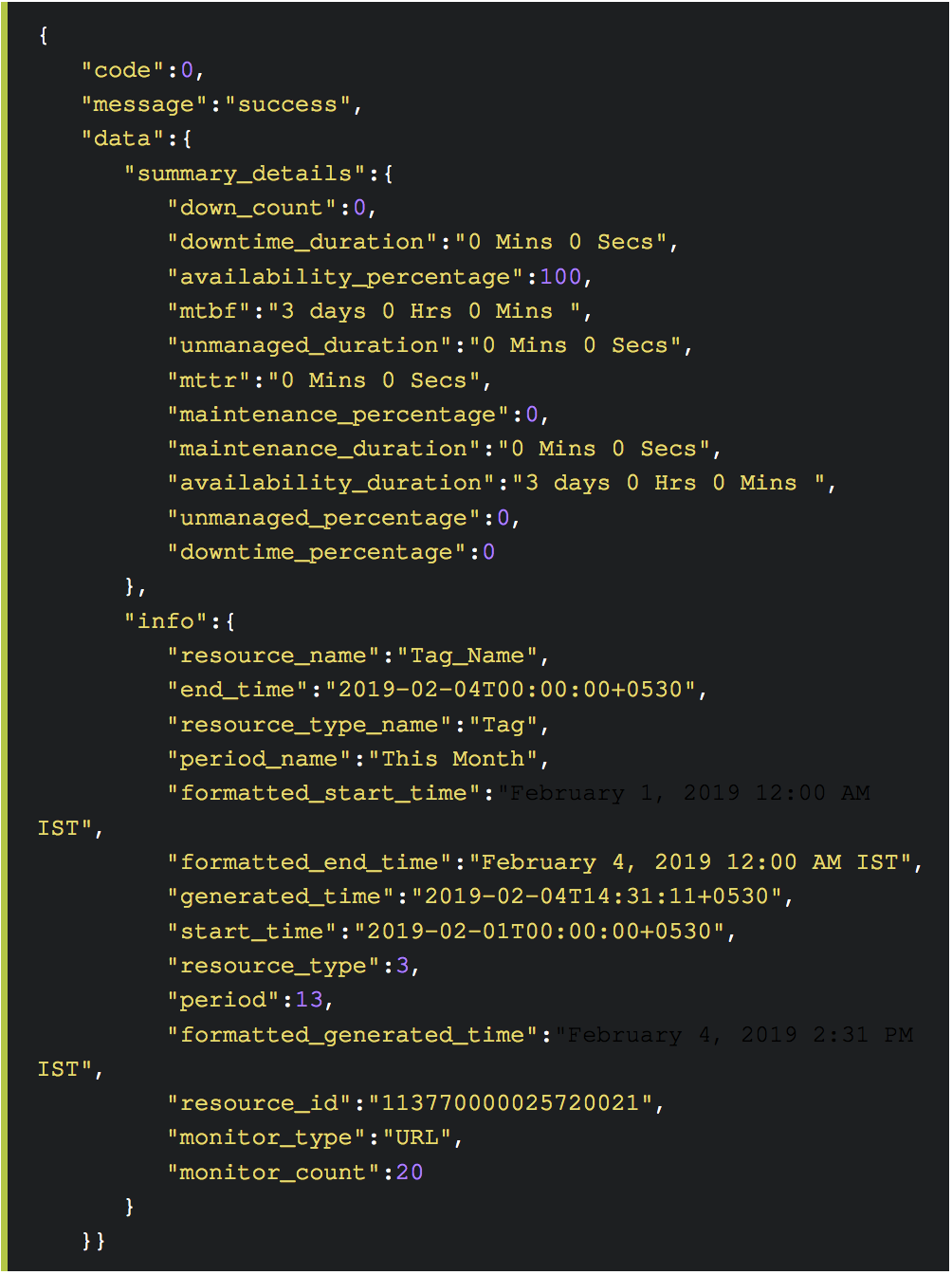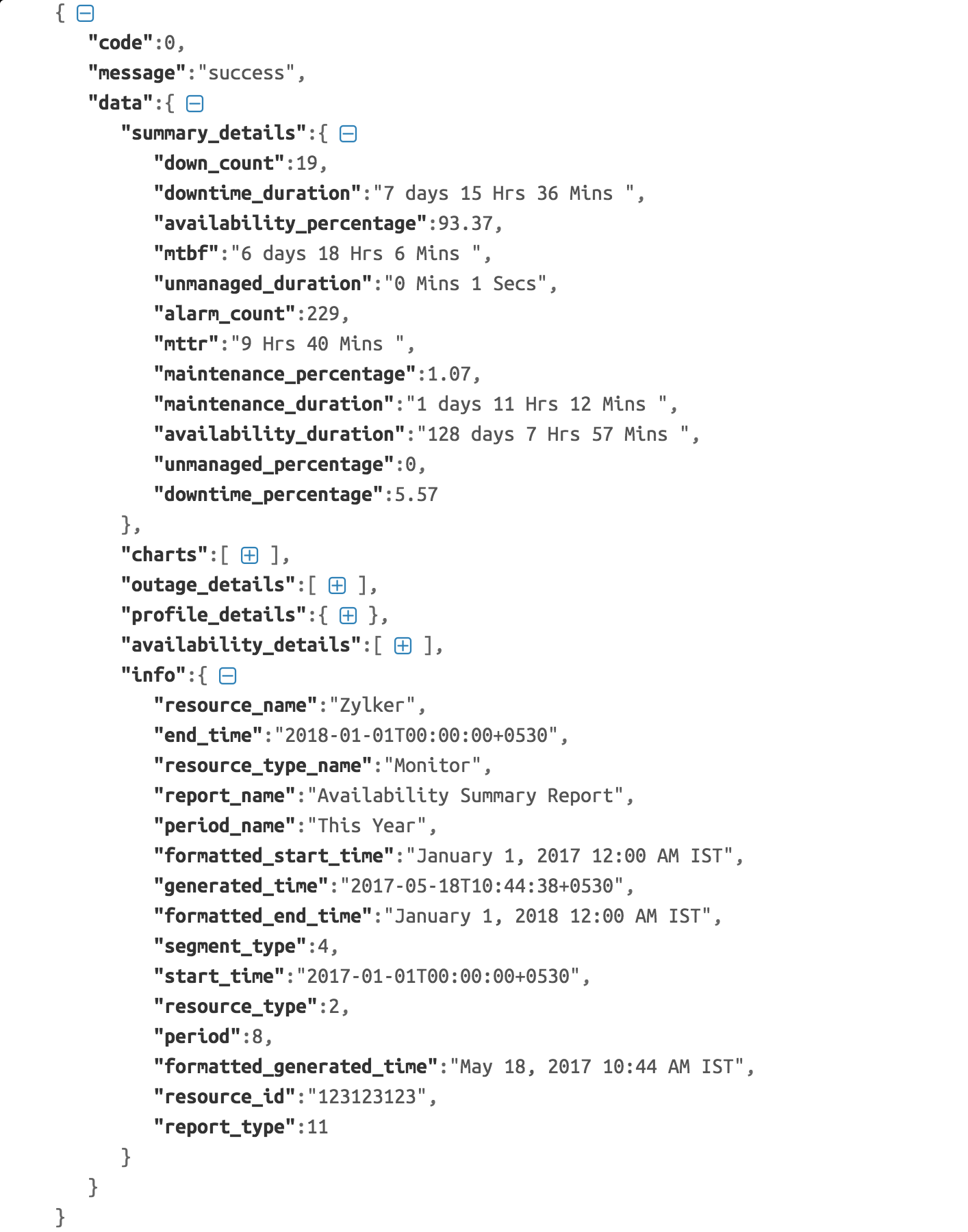Site24x7 offers a comprehensive set of documented REST APIs for your monitoring and reporting needs. Today, we're introducing a new lightweight version of our existing Availability Summary APIs. With a relatively less API overhead and usage of archived data for reporting, these new set of lightweight endpoints increase the overall data retrieval speed a notch higher and significantly improves the performance and user experience.
Reducing API overheads for a faster availability reporting
In comparison to our existing Availability Summary Report APIs, the lightweight basic availability APIs are tuned for a leaner reporting experience. By using archived data for availability calculations and introducing a lighter API response payload, data fetching will be much simpler and faster. The lightweight Availability API response consists of critical parameters listed under JSON objects summary_details and info.
If you're someone who utilizes a custom script to parse the Availability Summary Report JSON API response for your personal dashboard, and wants very less API overhead associated to availability reporting, then you might want to give the new lightweight availability APIs a try. We'll also be using the lightweight Availability APIs to enhance and speed-up data rendering for our Availability widgets in Custom Dashboard.

Fig 1. Sample JSON response for the new lightweight basic availability APIs
Below are the five basic availability GET APIs that have been newly released:


Fig.2: Sample JSON response for existing Availability Summary Report
Important Points to Note
Here're some crucial facets of the lightweight basic availability APIs that you must make a note of:
- The basic availability APIs allow you to quickly retrieve the basic availability details of your individual monitors, monitor groups, monitors of a particular type or monitors associated to a monitor tag & monitor type.
- The basic availability APIs provide you with the average availability data. On the contrary, if you want to retrieve location-based availability data, profile details or outage details, you can instead use the Availability Summary Report APIs.
- You can use the Availability Summary APIs for your detailed availability and outage reporting when API overhead is not to be considered. However, the basic availability APIs are best suited for your daily reporting needs like quickly fetching the monitor group average values.